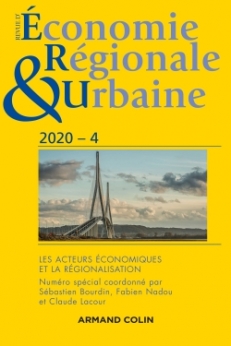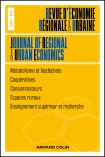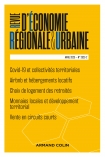
Revue d'économie régionale et urbaine (4/2020)
Pour acheter ce numéro, contactez-nous
Recevez les numéros de l'année en cours et accédez à l'intégralité des articles en ligne.
Ce travail propose une étude de la localisation des étrangers en France et des déterminants de leur mobilité résidentielle. Il utilise différents instruments méthodologiques ainsi qu’une base de données reconstruite, permettant d’identifier le nombre d’étrangers par zones d’emploi en France métropolitaine entre 1968 et 2014. Ce travail montre, en premier lieu, qu’il y a une diffusion de la population étrangère sur le territoire national entre 1968 et 2014 et que les disparités démographiques entre les zones d’emploi tendent à se réduire. Il montre, en deuxième lieu, que la mobilité résidentielle des immigrés étrangers est motivée par les mêmes déterminants que celle des natifs, à savoir les tensions sur les marchés locaux du travail et du logement. Ce travail montre clairement qu’il n’y a ni de comportement généralisé d’évitement des immigrés par les natifs ni de préférences communautarises dans les choix de localisation des immigrés en France.
This paper aims to study the location of the immigrant population in France and the determinants of its residential mobility. This work uses a series of different methodological and econometric tools as well as a reconstructed database provided by the National Office of Statistics that measures the share of immigrants in the 304 commuting zones of metropolitan France between 1968 and 2014. This work firstly shows that there is a spatial diffusion of the immigrant population in France between 1968 and 2014. Although the results do not clearly confirm the hypothesis of a demographical convergence of the 304 commuting zones, they show that disparities tend to lessen thanks to the strong residential mobility of immigrants, especially towards the Northern and Western regions. The Paris region remains the area with the highest concentration of immigrants. Secondly, this paper also shows that the residential mobility of immigrants is motivated by the same determinants as the mobility of natives, which are essentially the tensions on the local labor markets and the conditions of the local housing markets. Finally, this work clearly shows that there is neither a general behavior of discrimination of immigrants by natives nor path dependency and community preferences in the location choice of immigrants settled in France, when they undertake residential mobility. This work finally studies the spatial dimension of the residential mobility of immigrants in France over the last forty years.

